RIVERS WILD -- CANOE COSTA RICA
Nature and Mountains Alive!
I stopped paddling briefly to admire the large anhinga, or "snakebird," drying its outstretched wings on a log at the river’s bank. "These birds can’t fly unless they dry their wings," said my wife from the other end of the canoe, "They‘re designed for diving and fishing; their feathers have very little oil." Suddenly, in a flurry of motion a caiman jumped from the bank, jaws slashing, as the anhinga dived to avoid his attack. We scanned the water for long seconds, wondering if the crocodile-like caiman had captured its lunch under water. Suddently the anhinga’s narrow neck pierced the surface fifty feet upriver and quickly dived again, safe from the jaws of defeat -- this time.
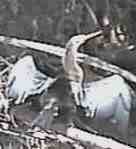 |
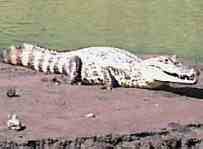 |
 |
Cano Negro Wildlife Reserve
That morning our group had motor-boated from Nicaraguan border town Los Chiles, twelve miles up the Rio Frio, canoes in tow, into the incomparable Cano Negro wildlife reserve. We lunched at Lago Cano Negro’s outlet, then continued up river in canoe. Eugenio, the young Costa Rican helmsman of our pared-down African Queen-like boat, helped us to spot an incredibly diverse set of inhabitants: turtles, caimans, birds, and lizards. The luminescently green "Jesus Christ lizard," seemed to "walk on water" as it slithered across the river. We spotted herons, egrets, ibis, anhingas, kingfishers, flycatchers, swallows, hummingbirds, buzzards, and wood storks.
Our tour leader, Jim Walker, busily leafed through his voluminous Costa Rican bird manual as we rounded every river bend. Kingfishers would dive and rise with their catch, and flocks of egrets would take to the air. The highlight of our journey was coming upon a small group of spider monkeys. The largest of the group put on quite a show, jumping from limb to limb, then hanging head first and peering down at us.
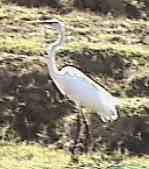 |
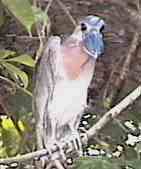 |
 |
Canoe Costa Rica
Jim Walker heads up Canoe Costa Rica, a Costa Rican company and affiliate of Jim’s BattenKill Canoe in Vermont. Since 1991, Canoe Costa Rica has run a variety of trips, ranging from one to eleven days. We had signed for the prototype tour of the "Mountains Alive" three day trip. Our group was lead by Jim, a hearty, dry-humored adventurer who’s explored seemingly every corner of Costa Rica to develop the best canoeing and nature-viewing itineraries. His cohort, Luis, is a Costa Rican native and handles the bus driving and equipment carrying responsibilities.
All tours originate in Costa Rica’s main city of San Jose, making arrangements easy for the paddlers. Luis’ ability to navigate the surprises of Costa Rica’s pothole roads and impetuous drivers made us feel almost secure as we wound our way over the narrow road ascending the Cordillera Central. The other set of canoeists on this tour included Sally and JoAnn, two adventured-minded business professionals who had left husbands and grandchildren behind to explore Costa Rica together.
 |
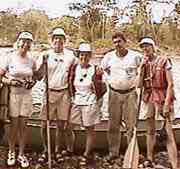 |
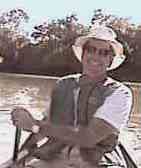 |
Mountains Alive, Rivers Alive
 Courtesy: San Bosco Hotel |
Jim based us for two nights in the small northern town of Fortuna, near Arenal
Volcano. From our hotel we could see Arenal’s steep cone, blowing off steam from time
to time. The volcano frequently puts on a fiery night-time show, best viewed from a resort
and hot springs a few miles outside town. Fortuna proved to be an excellent point from which to reach the three rivers of our tour. Many additional canoeing alternatives are available from here. Besides the Rio Frio, we also canoed Rio Arenal and Penas Blancas. Rio Arenal was particularly beautiful, with its mixture of dense vegetation, open graze land, peaceful pools, and lively waters. Again we sighted egrets, herons and other wildlife along the way. |
We all improved our canoeing skills under Jim’s able guidance, including the "draws, pries, and ferries" that enabled us to better maneuver our crafts. However, our skills weren’t sufficient to avoid a spill at one particularly tricky Rio Arenal S-curve where we should have opted to beach, then walk the shoreline. After some in-the-water maneuvering, we were able to pull the water-filled canoe to shore, drain it, and get back on our way. Warm sun had dried us by the time we reached our take-out at Rio San Carlos. Luis had prepared an excellent repast, and we lunched heartily on local papaya, coconut, orange, melon, pineapple, banana, and palm-heart cheese.
Diverse Costa Rica
Costa Rica’s uniqueness hits you from all sides. The geography encompasses dry, cloud, and rain forests, steep mountain ranges, volcanoes, wetlands, jungle, and dry range lands. Our drive north from San Jose gave us mountain and jungle views, small plot farms, cattle ranches, villages, and cities such as charming Zarcero, with its inviting church and neighboring topiary garden. Near the summit of the Cordillera we were able to view the central plateau and busy San Jose surrounded by mountains and volcanoes, such as Poas and Barva. In one short stretch of road descending the Cordillera, we encountered neighboring small farms devoted to sugar cane, pineapples, tangerines, coffee, and plantains.
 |
 |
 |
Costa Rican food is a highlight of any visit. Don’t miss the gallo pinto (fried rice and beans with seasonings) and casados (tortillas with chicken, meat, or fish and rice, beans, and vegetables). My favorite drink was the refresca, made with tropical fruit (pineapple, papaya, orange, or combinations) mixed with milk or water. Costa Rica’s pineapple is unparalleled for its sweetness, and the national beers, Imperial and Bavaria, are a beer lover’s delight.
The people and culture of Costa Rica are what most set it apart from other Central American countries. "We explored other places in Central America and chose Costa Rica for our operations, based largely on the social factors," stated Jim Walker. "The people are independent, hard working, friendly, and they make things work. Their commitment to the environment is unparalleled, especially when you consider that this is a developing nation. National Parks and protected areas cover almost a quarter of the country’s geography." Our experience with Luis, Eugenio, and the other people we met in Costa Rica enforced Jim’s views.
More to Experience
| All too soon we bid fond farewells to Jim and Luis, and JoAnn and Sally. JoAnn and
Sally headed off to tour the Monteverde cloud forest. We returned to San Jose, and the
next day visited Poas Volcano up close. The crater, lake, and steam caldrons again showed
Costa Rica's volcanic origins. A trail hike through scrub forest at 8,800 foot altitude
brought us to a neighboring dormant crater lake, beautiful Lake Botos. In five short days we had unforgettably experienced a rich slice of Costa Rica’s wildlife and diversity, but our appetites were only whetted for additional explorations in the rain forest, Pacific and Caribbean coasts -- and more rivers wild! |
 |
Click here for details to plan your own trip to Costa Rica.
Les Furnanz
Article and photos